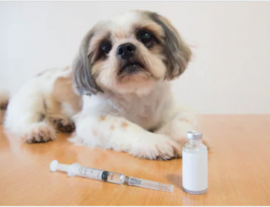Diabetes mellitus in dogs is predominantly caused by lack of insulin production from the pancreas - similar to “Type 1” diabetes in humans. In diabetic cats, it often results from the body’s resistance to the effects of insulin.
Normally, insulin is produced by the pancreas to metabolise glucose, which is then used as energy for the body. Diabetic dogs are unable to do this, resulting in hyperglycemia (high blood sugar) and the increased usage of fat and muscle reserves for energy. Signs to look out for at home include excessive hunger, thirst and urination along with weight loss. Vomiting, cataracts and recurrent infections may also occur. If not managed appropriately and swiftly, a life threatening complication called “ketoacidosis” will occur, resulting in collapse, coma and death.
Your vet can perform tests such as checking blood and urine sugar levels to make a diagnosis and treatment plan. With appropriate management and monitoring, many dogs live a happy life though will require life-long administration of insulin. If you are concerned or would like to know more, please speak to our friendly vets at Uni Vets Camden.
By: Melanie Ngo, 4th Year Veterinary Student, The University of Sydney






